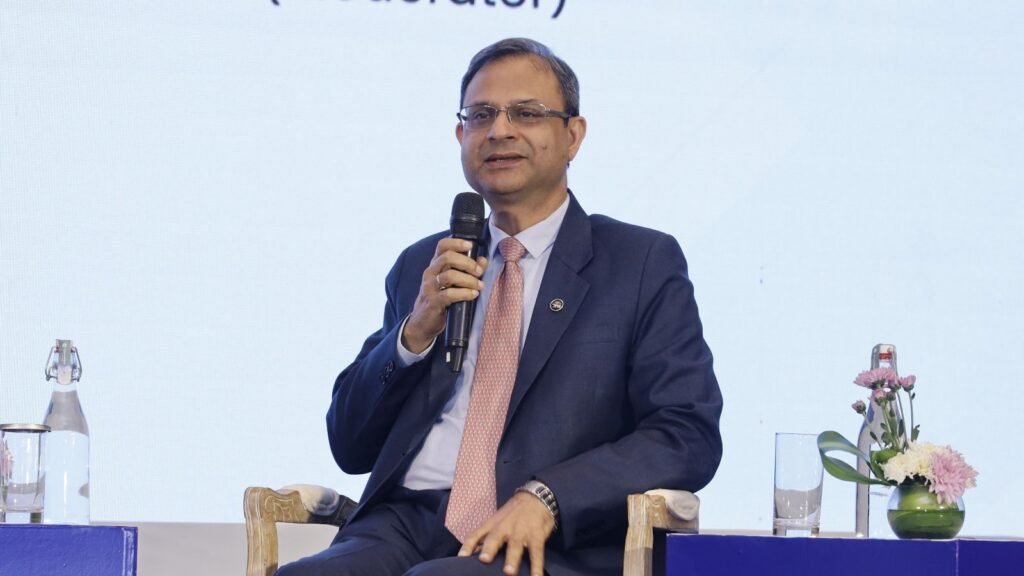Amid talk of instant transactions made via the Unified Payments Interface (UPI) to large merchants possibly attracting a fee in the future, Reserve Bank of India (RBI) Governor Sanjay Malhotra on Friday said that for the payments system to be sustainable, the cost of running it will have to be borne by either the government or users.
Speaking at the Financial Express BFSI Summit in Mumbai, Malhotra said UPI being free had “borne good fruits” and led to a rapid rise in the number of transactions. However, for any service to be sustainable, its costs had to be met. According to the latest RBI data, there were 18.4 billion UPI transactions conducted in June, up 32 per cent year-on-year.
“This (UPI) is an important infrastructure. The government has taken a view it should be available free and the government is subsidising it. And I would say it has borne good fruits,” Malhotra said. “The important thing is that the UPI, or any other payment system for that matter, is accessible, cheap, secure, and sustainable…and it will be sustainable only if someone bears the costs. So as long as it’s the government or someone else — that’s not so important — the important thing is that costs of any service should be paid, whether collectively or by the user.”
MDR and govt subsidies for payments
Speculation has been rife that UPI payments may be slapped with a per transaction fee called the Merchant Discount Rate (MDR). Usually in the range of 1-3 per cent, the MDR is levied on merchants by banks that process debit and credit card payments. Since January 2020, there has been no MDR on RuPay debit cards and UPI transactions to promote the adoption of digital payments across the country.
In lieu of the lack of MDR, the government has been subsidising payments of up to Rs 2,000 made to small merchants through its ‘Incentive scheme for promotion of RuPay Debit Cards and low-value BHIM-UPI transactions (P2M)’. The incentive offered is capped at 0.15 per cent of the transaction value. Large merchants are not covered under this scheme.
While 80 per cent of the incentive under the scheme is paid out without any conditions, 10 per cent of the incentive is contingent upon the technical decline of the merchant’s bank being less than 0.75 per cent, with the remaining 10 per cent to be paid out when the system uptime of the bank is greater than 99.5 per cent. In recent years, tech glitches in UPI transactions have increasingly come to light.
“As of now, there are no charges and the government is actually subsidising the various players, banks, and stakeholders in this whole UPI payments system. Obviously, some costs have to be paid; they will have to be defrayed. Right now, it’s the government which is defraying those costs. Going forward, how those costs will be met will certainly, I am sure the government will be looking at it,” Malhotra said on Friday.
Story continues below this ad
From Rs 957 crore in 2021-22, the government’s payout under the incentive scheme for UPI transactions rose to Rs 3,268 crore in 2023-24. The revised estimate for the total payout under the scheme in 2024-25 was Rs 2,000 crore, while Rs 437 crore has been budgeted for 2025-26.
The government, however, has rejected suggestions that MDR will be charged on UPI transactions. As recently as June, the finance ministry said such talk was “completely false, baseless, and misleading”.
“Such baseless and sensation-creating speculations cause needless uncertainty, fear and suspicion among our citizens. The Government remains fully committed to promoting digital payments via UPI,” the finance ministry said on X on June 11.
On his part, Malhotra said the RBI remains committed to providing a means of payment that is efficient, secure, and accessible. “And whatever needs to be done for that, we will ensure that we have a good, robust, secure, accessible payments system working in our country”.

